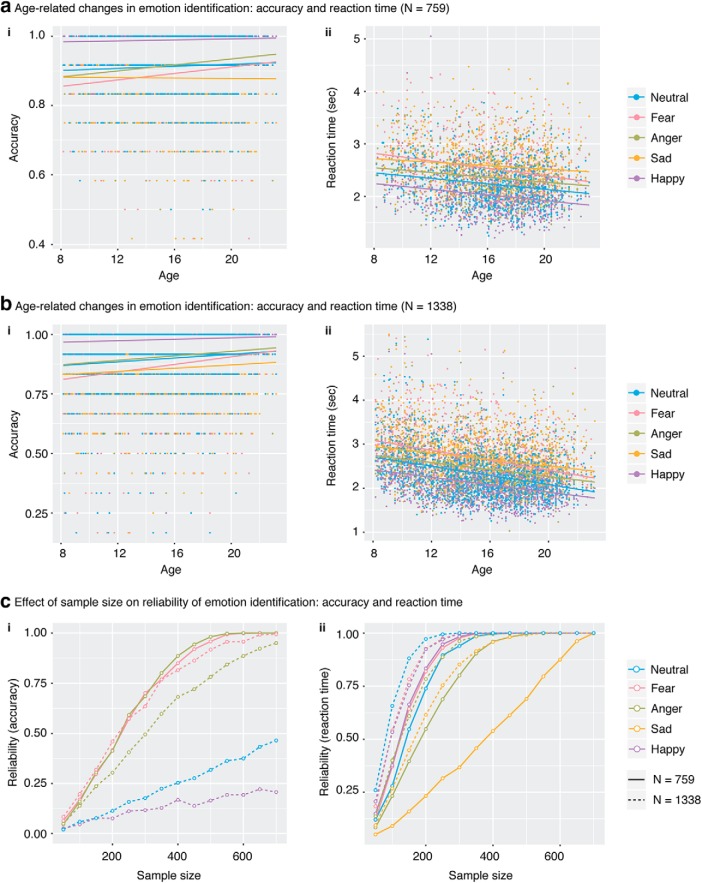Figure 2.
Developmental changes in behavior and reliability. Accuracy: The ability to correctly identify high arousal-negative (threat-related) emotions (fear and anger) improved with age in both the fMRI (ai) and full behavioral samples (bi). Only reliability of significant effects was assessed. RT: Time to identify an emotion decreased with age across all five emotion categories in both the fMRI (aii) and full behavioral samples (bii). c, Reliability was measured as the probability of observing a significant correlation between accuracy and age or that between RT and age. ci, Accuracy: Reliability of age-accuracy associations increased as sample size increased for conditions that showed significant age-related changes in accuracy in the fMRI (solid line) and the full behavioral (dashed line) samples. cii, RT: Reliability of age-RT associations increased as sample size increased for all five emotion categories in the fMRI (solid line) and the full behavioral (dashed line) samples. In general, a sample size of 300–350 was needed to identify reliable (reliability > 0.7) age-accuracy association and that of 200 was needed to identify reliable age-RT association.

